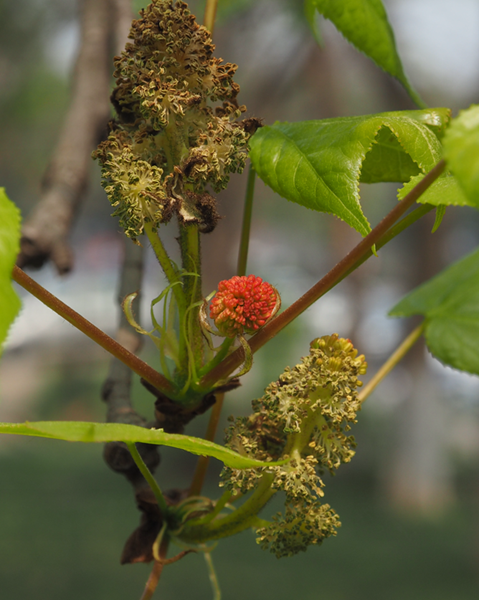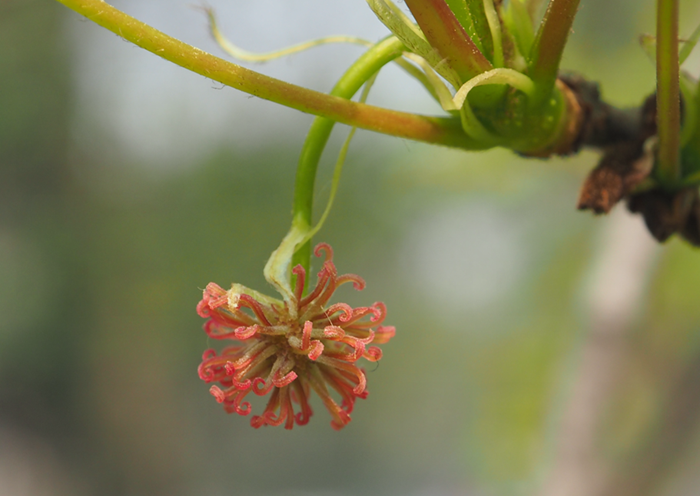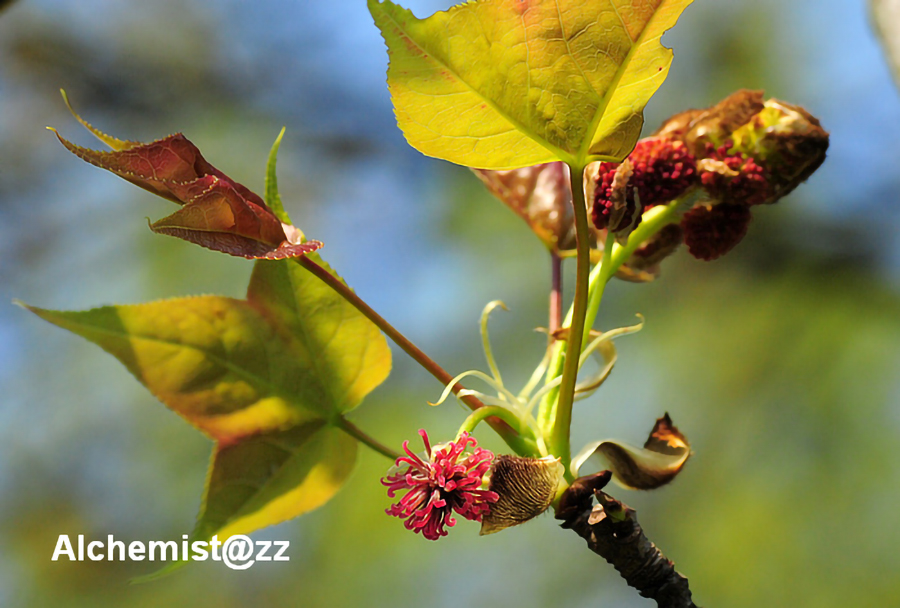枫香树 Liquidambar formosana
- Scientific Name: Liquidambar formosana Hance
- Ref: Ann. Sci. Nat., Bot., sér. 5. 5:215. 1886
- English Common Name: Chinese sweet gum
- Chinese Common Name: 枫香树 fēngxiāng∙shù, 枫香 fēngxiāng
- Japanese Common Name: フウ [楓] fū, サンカクバフウ [三角葉楓] sankakubafū, タイワンフウ [台湾楓] taiwanfū, イガカエデ [伊賀楓] igakaede
- Family: Altingiaceae
- Genus: Liquidambar
- Distribution: Sunny places, near villages, montane forests; 500–800 m. Anhui, Fujian, Guangdong, Guizhou, Hainan, Hubei, Jiangsu, Jiangxi, Sichuan, Taiwan, Zhejiang [S Korea, Laos, N Vietnam].
Trees to 30 m tall, trunk sometimes 1 m in diam.; bark gray-brown; branchlets pubescent or glabrous, somewhat lenticellate; buds ovoid, 1 cm, puberulent. Stipules red, nearly free or adnate to petiole, 1–1.4 cm; petiole 8–12 cm, pubescent; leaf blade broadly ovate, palmately 3-lobed and 3-veined, central lobe longer, abaxially usually drying gray-white, pubescent or glabrous, base rounded, margin glandular serrate, apex caudate-acuminate, cordate, subcordate or truncate, veins prominent on both surfaces. Male inflorescence a short spike, several arranged in a raceme. Female inflorescence 24–43-flowered; peduncle 3–6 cm, occasionally lenticellate, eglandular. Male flowers: stamens many, filaments unequal, anthers slightly shorter than filaments. Female flowers: staminode teeth 4–7, needlelike, 4–8 mm; ovary pubescent, styles 6–10 mm, usually coiled backwards. Infructescence globose, 3–4 cm wide. Capsules with persistent staminodes. Seeds many, brown. Fl. Mar–Jun, fr. Jul–Sep. (Flora of China)

03/17/2016, Hangzhou, Zhejiang

03/17/2016, Hangzhou, Zhejiang
